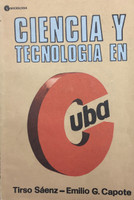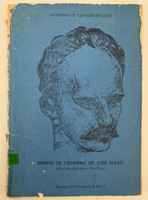- Travel
-
Exhibits
- La Portada Cubana
- Immortal Cuba: Artists Take on Their Heroes
- Seattle Poster Exhibit
- Sandra Dooley & Alejandrina Cué
- The Art of Wayacón
- Cuban Folk Art
- Cuba In Black And White
- 25 Years of Cuban Art Space
- Summer Folk Art Expo
- ¡SPRING AWAKENING FROM CUBA!
- Celebrating The Art Of Cuban Women
- Celebrating Paper, Affordable Art from Cuba
- Art of the Revolution
- Outsider Art
- Lost and Found
- En la lucha: Celebrating Cuban Women and Their Art
- Cuban Art Stash
- 100 Fires: 5 Cienfuegos Artists' Work on Paper
- Waya + Monte! Magic Realism in Cienfuegos
- Viva Cuba Viva! Poster Show
- Cultivando Sueños
- Black Lives Matter in Cuba Jan 9-March 27
- Leandro Soto: Crónicas visuales
- Cuban Canvas
-
Archive
- Global Reflection 2018: Spirit and Community
- Exhibit in the cloud: Contemporary Works on Paper
- MADE IN CUBA! MINNEAPOLIS EXHIBIT
- Cuban Posters and Photography from CCS collection
- AUTUMN SALE! Sept/Oct 2017
- SPRING ARTS AND CRAFT SALE
- Vuelo Directo/Non Stop: Alberto & Alejandro Lescay
- The Many Faces of Fidel
- Somos
- Made in Cuba!
- The US empire in Cuban graphics
- Made in Cuba/Seattle exhibit
- Entre Nos
- Looking Back
- Cuban Art Space
- Membership/Donate
- About Us
- Cuba News
-
"La Prehistoria" represents the second installment in the Cuban Academy of Sciences' "Cien Años de Lucha / Cien Años de Ciencia" (One Hundred Years of Struggle / One Hundred Years of Science) series, which explicitly linked scientific development to revolutionary struggle. The cover employs bold modernist typography in red and black separated by navy blue horizontal bars against cream, with a striking red spine creating a dynamic composition that evokes revolutionary banners and Cuban flag colors. This design strategy visually reinforced the series' central argument: that one hundred years of independence struggle culminated in one hundred years of scientific advancement under socialism.
Written by Ernesto E. Tabío, Director of the Anthropology Department at the Cuban Academy of Sciences, this study argues that Cuban prehistory research had been dominated by outdated bourgeois methodologies until the Revolution enabled a "definitive leap in quality" in scientific investigation. Published in 1968 during the "Año del Guerrillero Heroico" (Year of the Heroic Guerrilla Fighter), commemorating Che Guevara's death, the text divides Cuban history into three stages: Spanish colony (mid-19th century to 1898), neocolonial republic dominated by U.S. imperialism (1902-1959), and free socialist Cuba (1959-present). This periodization exemplified revolutionary historiography's project of repositioning scientific knowledge production within narratives of anti-colonial and anti-imperialist struggle, asserting that authentic scientific development required political liberation from foreign domination.
-
-
Discover More at the Center for Cuban Studies







